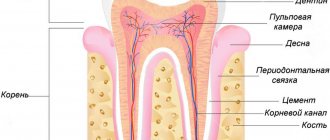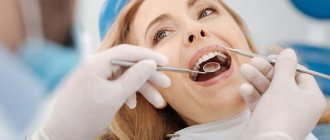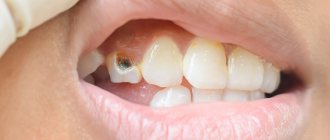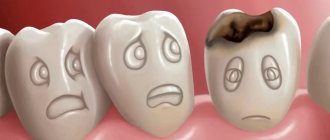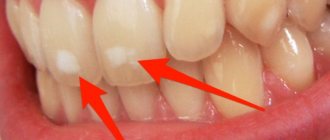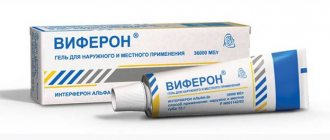Probably, almost every person goes to see a dentist with a feeling of fear and anxiety. Many people put off visiting the dentist until the last minute. They try to cure the tooth on their own or at least relieve the pain with various folk remedies, come up with non-existent reasons why they cannot go to the doctor, etc. However, sooner or later, you will have to go to the dentist. It is better to do this as early as possible in order to detect the disease at an early stage.
Is it painful to treat caries?
One of the most frequently asked questions when going to the dentist is whether it hurts to treat caries. Sitting down in a chair, we warn the doctor that we have a low pain threshold and, in general, we are simply afraid. The doctor will definitely select a drug that will make the treatment comfortable and painless, even in the most difficult cases.
Today, caries can be cured absolutely painlessly.
Without anesthesia
In rare cases, doctors have to carry out treatment without anesthesia. This usually happens when there is an allergy to anesthetics. If the patient is intolerant to drugs, the doctor may suggest treatment with laser or chemical reagents. General anesthesia is also an option.
As a rule, the majority of people prefer to undergo treatment under local anesthesia. But there are brave souls who have a high pain threshold or even prefer to do without an injection.
If we are talking about superficial caries, when the tooth tissue is not yet damaged, then this is understandable. But with medium and deep caries, such pain is almost impossible to endure without anesthesia. And it’s not necessary - the latest generation of anesthetics do not cause allergic reactions, they can be used even when treating children and pregnant women.
There is no point in being a hero when treating teeth - without anesthesia it will hurt. And talking about savings also makes no sense.
What determines the choice of filling?
Fillings are divided into temporary and permanent. Temporary fillings are also called diagnostic fillings. They are used to identify symptoms that will define the disease.
If not only the tooth structure is damaged, but also deeper layers, then a temporary filling helps diagnose the disease.
A permanent filling is used for completely different purposes and its quality is significantly different from a temporary one. The purpose of a permanent filling is to hermetically seal the tooth opening and for aesthetic purposes.
Fillings can be made of different materials, depending on the purpose. There are fillings: cement-based, plastic, amalgam, ceramic, etc. The dentist will determine which filling is right for you during a consultation.
On the front teeth
The main feature of caries on the front teeth is that it develops very quickly. Due to the high load, the enamel quickly becomes thinner, causing tissue destruction to occur at a rapid pace. In advanced cases, severe pain begins, especially while eating. It is also necessary to talk about the aesthetic aspect - caries on the front teeth instantly attracts attention.
It is not painful to treat caries on the front teeth under local anesthesia. Perhaps the doctor will slightly increase the dosage of the drug to completely eliminate sensitivity.
Important. If you notice a spot or initial caries on your front teeth, we recommend that you immediately contact your dentist. If you wait, you risk losing a tooth in the most visible place. And this means additional costs for prosthetics.
Dental treatment is painful. We destroy myths.
Since childhood, dental treatment has been associated with pain. And even at a more mature age, the thought will certainly itch in the background: what if it hurts? Or will the anesthesia not work?
Pavel Anatolyevich Pazhlakov, a dentist at the Dudko and Sons Dental Implant Center,
answered questions about the possibilities of pain relief in modern dentistry - Pavel Anatolyevich, could you outline what options for pain relief exist in modern dentistry? All methods are divided into local, general anesthesia and their combinations. Local means that it acts only on the area that actually needs to be anesthetized, that is, in our case, on the nerves that directly transmit the pain signal from the tooth. With general anesthesia (or anesthesia), a person falls asleep and does not feel anything. In dentistry, this option is in the vast majority of cases redundant. We always try to adhere to the golden rule: pain relief must be adequate and reasonable - that is, correspond to the specific clinical situation. In each case, you need to choose the most effective and, at the same time, safe method of pain relief. — How can you “turn off” the nerve that transmits the pain signal from the tooth?
For this purpose, local anesthetics are used, what is popularly called “freezing”. These substances block the transmission of signals along the nerve. How to deliver the anesthetic to the nerve? The two most popular options are the so-called infiltration and conduction anesthesia. In the first case, we simply inject the anesthetic into the tissue using a syringe - naturally, it reaches the peripheral nerve endings and blocks them. In the second, we inject the drug in the immediate vicinity of the nerve in the place where all the fibers conducting the signal from the desired area have already gathered into a single bundle. In any case, all the paths through which a message about pain can reach the brain are blocked - and the person does not feel anything. - But the injection itself is not very pleasant either. Some people are afraid of the injections themselves. For this case, there is topical anesthesia. Its essence is that an anesthetic, gel or spray, is applied to the area that needs to be numbed before anesthesia is administered with a syringe. Application anesthesia is not very effective in the sense that it only anesthetizes the superficial layers. But it allows you to “turn off” an area of skin so that the patient does not feel the injection. — Do local anesthesia have side effects? Some people are intolerant to local anesthetics. You may remember that when you go to the dentist, he always asks: “Have you had pain relief before?” This is done to see if the person has had a reaction to the local anesthesia. — If there was such a reaction, what to do? Treat teeth under anesthesia?
No, why so radical right away? Just use a different anesthetic; there are a lot of them available now. Sometimes, however, there are patients who cannot tolerate any local anesthetics at all - then yes, anesthesia or sedation. — It turns out that any patient can be given adequate pain relief? And is there a difference in pain relief for the upper and lower jaws? Yes. There are, of course, difficult cases, but the arsenal of methods is so wide that there is always something suitable. And if we consider the analgesic effect, then a 100% anesthetic effect is not always observed on the lower jaw because bone tissue is more dense. Because of this, it is less permeable to the anesthetic solution. In such cases, we increase the waiting time for the onset of anesthetic pain relief or increase the dose of the drug. - Thank you, Pavel Anatolyevich, after talking with you, it’s almost no longer scary to go to get your teeth treated. But I still really don’t want them to be drilled... And don’t! My advice to patients is to contact dentists before anything starts to hurt. You should try to go for a preventive examination at least twice a year in order to prevent complications that can cause a lot of problems. There is no need to be afraid to go to the dentist, he is not an inquisitor: if you are healthy, no one will try to make extra “holes” in your teeth. And if your teeth need to be treated, today it can be done absolutely painlessly. In order to visit a dentist , you need to: make an appointment by calling +375445450910 or go to the consultation page.
Fear of dentists - first person:
The article was prepared by a specialist: Pavel Anatolyevich Pazhlakov
Cervical caries
The majority of patients believe that the treatment of cervical caries is particularly painful. In principle, this is how it is - the cervical zone is characterized by increased sensitivity. Without anesthesia, it will undoubtedly hurt.
Cervical caries can not only be “in plain sight”, but also spread deeper. Therefore, the question of carrying out treatment without anesthesia is not even raised.
Caries on the front teeth: what to do and why it occurs
In fact, there can be many reasons for its appearance:
- Hereditary predisposition. Our genes determine the thickness of the enamel. The thinner this tissue is from birth, the higher the likelihood of disease. But often the protection is weakened due to a person’s fault when he abuses hard, spicy, sour foods, carbonated drinks and sweets.
- Lack of hygiene procedures. Sometimes we are too lazy to carry them out thoroughly, so we either brush superficially, forgetting about hard-to-reach places, or we completely neglect this process. Because of this, plaque accumulates, and this is “fertile soil” for microbes.
- Poor nutrition. Vitamins and microelements are important for healthy teeth; without them, the enamel becomes thinner and changes its structure.
- Deformed jaw. It can be this way from birth or change during life from injuries or improper growth of the incisors. Most often, caries affects curved units: they are more difficult to clean, so plaque often accumulates on them. People with a narrow interdental gap or too wide fissures (grooves on the chewing surface) are also at risk.
- If a person works in a hazardous enterprise, he often unknowingly inhales air through his mouth containing chemicals that corrode enamel.
- Artificial injury. This applies most of all to seed lovers and seamstresses who bite threads instead of using scissors.
- Bad habits. Alcohol and nicotine not only thin the dental tissue, but also change its color, which makes their appearance unpleasant.
Average caries
With average caries, not only the enamel is destroyed, but the dentin is also affected. The disease at this stage is practically asymptomatic; sensitivity may occur when biting.
Treatment of average caries takes place with anesthesia, which allows the patient not to experience discomfort and feel absolutely comfortable.
Deep caries
Deep caries is characterized by extensive damage to the hard tissues of the tooth. Painful sensations occur during eating and under the influence of temperatures - the tooth reacts to hot and cold. The carious cavity is separated from the pulp by a thin layer of dentin, which explains the increased sensitivity of the tooth to irritants.
Deep caries cannot be treated without pain relief. The use of anesthetics ensures a comfortable state for the patient during treatment with a complete absence of pain.
Causes and symptoms of caries
Under the influence of acids that microorganisms produce during their life, the enamel is destroyed, then the dentin, the infection reaches the nerve of the tooth, which causes pain, and then the inflammation moves further into the bone.
Caries entails unpleasant consequences, since the infection weakens the hard tissue of the tooth and the tooth can break under normal stress.
A chipped tooth looks unsightly, especially if it occurs on the incisors. In such cases, conventional caries treatment is not enough - restoration of the front teeth is necessary.
If caries is started, the infection process can reach the bone, resulting in tooth loss. Treatment of pulpitis is no less complex and is accompanied by significant pain.
Caries appears due to poor nutrition, lack of vitamins and large amounts of sugar in the diet. Bad habits and poor oral hygiene also influence the development of the disease. Tooth enamel is considered one of the strongest tissues in the human body, but becomes vulnerable when the pH decreases, this is due to excess sucrose in food, insufficient saliva, fluoride deficiency, increased formation of plaque and tartar. The risk of caries is increased in patients with orthopedic and orthodontic structures. Because they require special care and make brushing your teeth difficult.
The risk of caries also increases in patients wearing orthopedic and orthodontic appliances, which require careful care and make teeth cleaning difficult.
Why do teeth hurt with caries?
Mostly, painful sensations appear already at the stage of deep caries. In this case, the pulp (nervous tissue of the tooth) is separated from the oral cavity by only a thin layer of dentin and reacts to irritants. Pain appears when brushing teeth, when food gets into a carious cavity, as well as from spicy, sweet, and salty foods.
Under the influence of irritants in the pulp, blood flow increases, which leads to excess pressure on the nerve fibers. The pain goes away quite quickly, immediately after the irritant is removed.
Important. Without treatment, deep caries turns into pulpitis. The inflammatory process affects the nerve fibers, the pain gradually becomes unbearable - constant or throbbing, sharp or dull, localized or spreading.
Deep caries: what is it and how does this stage of the disease manifest itself?
Caries is a disease that goes through several successive stages in its development. A carious tooth lesion begins with a small spot on the enamel and, if measures are not taken and you do not contact a specialist, the destructive process will progress, affect the internal tissues of the tooth, and eventually the disease will reach the stage of deep caries.
When caries is advanced, a deep carious cavity forms in the tooth, reaching almost to the pulp (nerve of the tooth). Between the pulp and destroyed dental tissues there remains a thin layer of healthy dentin, which is not sufficient protection of the tooth nerve from infection. If deep caries is not treated urgently, it will turn into pulpitis or periodontitis - complications that can lead to tooth loss.
Deep caries is clearly visible visually (if not hidden by a poorly installed filling) and has clear symptoms:
- With deep caries, the tooth hurts. Painful sensations occur when a tooth with caries comes into contact with external irritants - hot/cold, sour/sweet foods;
- You can see a deep, dark-colored cavity in the tooth (as people say, there is a big hole in the tooth);
- Since the carious cavity with deep caries becomes clogged with food debris, a strong and unpleasant odor may appear from the mouth.
WORTH LEARNING AND REMEMBERING: How do you understand that a tooth hurts because of deep caries, and not because of pulpitis? Pain during deep caries can be quite severe, but it quickly disappears if the external irritant that provoked the pain syndrome is eliminated. With pulpitis, the tooth hurts for a long time and in attacks. In any case, pain in a tooth is already a reason to visit a dentist. Remember that the longer you delay dental treatment, the higher the risk of losing a tooth!
Stages of caries
The causes of caries include hereditary factors, the quantity and quality of saliva, and disturbances in protein and mineral metabolism in dental tissues. Oral hygiene plays an important role, as does excessive consumption of sweets. Another factor contributing to the occurrence of caries is a lack of calcium and phosphorus in the diet. Teeth can rapidly deteriorate during pregnancy or after suffering from infectious diseases.
Caries develops gradually. Over time, without treatment, a carious cavity appears in place of an almost invisible spot, which at a certain point begins to increase, affecting an increasing amount of dentin.
Experts distinguish four stages of caries development - carious spot, superficial caries, medium caries, deep caries.
Treatment of caries
Treatment of caries in the Lyubertsy dental clinic "VUGI" begins with an examination of the oral cavity by a dentist, a thorough diagnosis of the condition of all teeth with mandatory mechanical treatment of detected carious cavities. Mechanical impact is carried out using special systems using boron. After mechanical treatment of the carious cavities, medications are used, after which the carious cavity is filled with one or another filling material.
It is impossible to overestimate the importance of timely contacting a dental clinic for caries treatment. Patients should know that there is no difference between the extent of dental caries damage and the intensity of pain.
It is because of ignorance of this fact that patients get an appointment with a dentist with already severely advanced caries, when longer and more complex treatment and a large number of repeat visits are already required, which is especially offensive, since visits to a dentist-therapist require a fairly large amount of time ; In addition, this fact always leads to additional monetary costs.
In the initial stage of the disease, if such a possibility exists, non-operative treatment of caries consists of carrying out comprehensive professional oral hygiene; during these manipulations, the dentist removes plaque and restores the affected enamel. Such manipulations are carried out through the use of fluorides in the form of solutions, pastes, gels, and varnishes. Often such doctor’s actions are combined with the use of solutions of calcium salts and restorative drugs.
In acute forms of caries, the patient is prescribed a special diet rich in proteins and mineral salts and vitamins A, C, D. Calcium preparations are also prescribed, such as colecalciferol, calcinova, calcium carbonate, sodium fluoride.
Caries in the spot stage
Initial stage of caries. Characterized by the appearance of spots on the enamel. In the demineralized area, damage to the enamel structure is observed. As a rule, patients cannot detect it themselves.
The spot may be white or pigmented. If a brown or black stain is easy to notice, then a coated stain can only be diagnosed using an aqueous solution of methylene blue.
Important. With timely treatment, remineralization therapy can be carried out and tissue can be restored. This is why experts recommend visiting the dentist once every six months - in order to take timely measures and prevent caries from developing.
The carious spot is treated with solutions of sodium fluoride and calcium fluoride. The patient is prescribed vitamins, calcium and phosphorus supplements, and brushing teeth with fluoridated toothpaste is recommended. Your doctor may also recommend a special diet that includes foods high in calcium and certain proteins.
Anesthetics in dentistry
The doctor decides which type of painkiller is suitable for a particular patient, taking into account the specifics of the clinical situation. "Lidocaine", "Mepivacaine", "Trimecaine" and "Articaine" are applicable if the intervention is simple. Their effect lasts for more than an hour. Etidacaine and Bupivacaine are indicated for serious problems. The dentist introduces them if it is clear in advance that the treatment will take a long time.
It is important that the selected anesthetic meets the basic requirements:
- was non-toxic;
- did not cause tissue irritation;
- had a minimal number of side effects;
- provided pain relief for the required period of time;
- did not dilate local vessels;
- completely eliminated the pain caused by medical manipulations.
Thus, in order to answer the question “Does it hurt to treat teeth?” was negative, it is very important to contact the dental clinic in a timely manner. In the early stages of caries, all necessary procedures are absolutely painless, since the most sensitive part of the tooth - the pulp - remains intact. The doctor simply removes the darkened hard tissue and closes the resulting cavity with a filling.
By undergoing preventive examinations at a dental clinic once a year, you can avoid many serious problems and extend the life of your teeth.
Superficial caries
Affects only enamel with damage to the structure and the impossibility of restoration. At this stage, it is already possible for the damaged tooth to react to cold or hot.
Caries affects only the upper part of the tooth, without affecting the dentin. At this stage, treatment is already required. The dentist removes damaged tissue using a drill and installs a filling.
Since caries has not yet affected the tooth tissue, treatment can be carried out without anesthesia. But if you have a low pain threshold or are simply overcome by fear of the drill, you still need to perform local anesthesia.
Is it possible to cure deep caries with folk remedies or at home?
Some people are so afraid of dentists that even when a tooth starts to hurt badly, they do not go to the clinic, but start looking for traditional medicine recipes against caries or take antibiotics, hoping that these drugs will get rid of caries.
Let us write right away that such amateur activity is useless and dangerous. Caries cannot be cured at home either with decoctions or tablets from the pharmacy. To stop the process of tooth decay, you need to remove damaged tissue and destroy bacteria. And all these procedures are feasible only in a clinical setting.
Average caries
At the third stage, caries already affects the tooth tissue – dentin. A small carious cavity forms, the tooth begins to bother and hurt. It reacts to cold air entering when talking or breathing, to leftover food, to cold and hot.
The manipulation is carried out under anesthesia, as the patient may experience quite strong pain. Depending on the degree of tissue damage, the dentist selects the necessary treatment. In most cases, the carious cavity is prepared, infected tissue is removed, and filling is performed.
How to treat caries with an injection step by step?
At other stages of caries, teeth are treated approximately according to the same scheme, which includes several stages:
- Cleaning teeth.
The doctor removes tartar and plaque from the surface of the tooth being treated.
- Selecting the shade of the filling.
The dentist selects the material for filling, focusing on the natural color of the enamel of the damaged tooth. To do this, he uses the so-called Vita scale - a plastic strip with samples of different shades.
- Anesthesia.
Anesthesia injections help make the procedure painless and reduce discomfort during the treatment of caries. The type of drug and dose are selected taking into account the age and individual characteristics of the patient. The anesthesia usually lasts from 40 minutes to several hours. Sometimes the gums hurt a little after the injection, but this does not compare with the pain when treating deep caries without anesthesia.
- Isolation of the tooth before treatment.
It is performed by placing a small plate - a rubber dam - on a row of teeth. As a result, one or more necessary teeth are completely isolated from the others. This allows the dentist to do a better job and prevent blood and saliva from getting on the cleaned surface, which guarantees its reliable connection to the filling in the future.
- Preparation of a carious cavity.
Cleansing the tooth of all tissues that have been damaged by caries and parts of the tooth enamel above the carious cavity. If you leave the caries at least partially and install a filling, after a couple of months the problem may recur. And in the future complications may develop - pulpitis and periodontitis.
- Formation of a carious cavity.
The doctor creates the best conditions for installing the filling by forming special support points. It makes indentations, notches, irregularities in the cavity, and smoothes the edges of the enamel. This is required for the filling to fit tightly to the walls of the tooth.
- Washing the cavity.
After the above procedures, the carious cavity is washed and sprayed with a stream of air to remove dentin sawdust.
- Medical treatment of carious cavity.
It is produced using antiseptic solutions to prevent the new development of caries. Then the doctor dries the cavity well so that drops of moisture do not interfere with the close contact of the filling with the tooth tissues.
- Acid etching.
It is performed so that the adhesive, which is applied after etching for a stronger fixation of the filling material, can penetrate deeper into the dental tissue. To do this, use a special gel with phosphoric acid. After etching, the gel is washed off well and the tooth is dried.
- Application of adhesive.
It is applied to the tooth to firmly fix the light-curing filling material; after absorption, it is illuminated using a special lamp.
- Application of a therapeutic and insulating pad.
This step can be performed either before or after acid etching. Spacers are an intermediate layer between the dentin or pulp and the filling material. Therapeutic pads protect the tooth from external adverse influences and help stop inflammation; they are most often used to treat deep caries. Isolating gaskets protect the pulp, the soft connective tissue of the tooth, from the negative effects of filling materials.
- Placing a filling.
The doctor takes turns, layer by layer, applying filling materials and drying each of them with a dental lamp.
- Grinding, polishing.
The restored tooth with filling is ground and polished to perfect smoothness and evenness. This gives it a natural shine and eliminates the smallest imperfections and gaps that cause inconvenience. At this stage, caries treatment ends. Thus, anesthesia with an injection is given at the very beginning of dental treatment, and all other stages are absolutely painless for the patient.
Pain relief during treatment
For local anesthesia, drugs based on articaine and mepivacaine are used. Articaine-type drugs are more effective than novocaine - 5-6 times, lidocaine - 1.5-2 times.
Most anesthetics contain, in addition to the main active ingredient, vasoconstrictor components - adrenaline or epinephrine, which reduce the leaching of the anesthetic, which in turn leads to an increase in the duration of the effect in time and the strength of anesthesia.
Articaine anesthetics include:
Cost of the service in Moscow
Of course, the cost of treating deep caries will be higher than the cost of treating initial caries, because the treatment process will be more complex, including various manipulations and carried out in two stages.
On average, the cost of treating deep caries of one tooth can amount to 5-6 thousand rubles, and this is if there is no need for treatment of the tooth canals. If you want to find out for yourself the exact cost of caries treatment in your case, you definitely need to visit the dentist’s office. The doctor will examine the clinical picture, conduct a diagnosis and, before starting treatment, announce its full cost.
Ultracaine
French drug, available in 1.7 ml carpules in three forms:
- Ultracaine DS forte
– containing 1:100,000 epinephrine. A highly effective anesthetic for operations and treatment of pulpy teeth. Not recommended for patients with thyroid diseases and cardiovascular pathologies. - Ultracaine DS
- with an epinephrine concentration of 1:200,000. Ideal for pain relief in pregnant and lactating women and patients with compensated cardiovascular diseases. - Ultracaine D
– without adrenaline/epinephrine. Used when there is a high risk of allergic manifestations. Can be used by patients with bronchial asthma, cardiovascular pathologies, and thyroid diseases.
The drug can be used starting from the age of four.
Septanest (France)
They are produced in two forms with an adrenaline content of 1:100,000 and 1:200,000. Unlike Ultracaine and Ubistezin, the anesthetic contains preservatives that have a strong allergenic effect.
The drug Scandonest is produced based on mepivacaine. The anesthetic does not contain preservatives or vasoconstrictors. Recommended for anesthesia for pregnant and lactating women suffering from cardiovascular diseases, bronchial asthma and thyroid diseases.
Important. When visiting a dentist, be sure to tell the doctor if you have allergies or chronic diseases. This will help the doctor choose the right anesthetic for you.
Will it hurt when I get an injection in the gum?
To administer the anesthetic, special carpule syringes with a very thin needle are used, which minimizes discomfort during the injection. The drug is administered quite slowly, over 40-45 seconds.
In most clinics, before the injection, so-called topical anesthesia is performed using a special anesthetic gel or septic tank. In this case, the specific area of the mucous membrane to which the composition was applied is anesthetized. In this case, the needle entry will be painless.
What anesthesia is used in the treatment of caries?
To remove tooth sensitivity and treat it painlessly, the dentist selects the appropriate type of anesthesia for each patient.
The most common are three types - application, infiltration and conduction:
- Application involves pain relief without injections. A gel or solution of an anesthetic is applied to the oral mucosa, which reduces the sensitivity of the tissues in this area. Most often, topical anesthesia is performed when treating or removing baby teeth. It is also used to numb the injection site.
- Infiltration is anesthesia with an injection of an anesthetic, which is injected relatively shallowly and affects the peripheral nerves. This type of anesthesia is often performed in the treatment of caries and pulpitis. After the injection, the patient does not feel pain and feels comfortable in the dental chair.
- Conduction anesthesia acts on large nerve canals and trunks. With its help, you can remove the sensitivity of half the jaw. It can be used for caries, which is complicated by a serious inflammatory process, during surgery.
The type of anesthesia, as well as the drug used to numb the teeth, is selected by the dentist.
When to see a doctor, symptoms
Don’t delay going to the dentist if you suddenly experience even minor pain. The very fact of pain indicates that caries has begun to develop, which in some cases affects the tooth almost instantly.
When to go to the doctor:
- pain when biting;
- pain from temperature and chemical irritants;
- pain from exposure to cold air.
Without a doubt, the best option is to visit your dentist once every six months in order to take timely measures to prevent the development of caries.
What to do to prevent the development of caries?
- Maintain careful dental hygiene. Brush your teeth twice a day, use dental floss and mouthwash - this will help avoid caries on contact surfaces.
- Once every six months, undergo a professional oral hygiene procedure.
- Correct the bite and crowding of teeth, which interferes with proper hygiene.
- Eat right, eat more raw solid vegetables and fruits.
- Visit the dentist for preventive purposes at least once every 6 months and undergo diagnostics of hidden caries.
Complications
Teeth do not heal on their own. In any case, you will have to see a doctor, but it is better to do this as soon as possible. If it so happens that for some reason you have delayed this process, be prepared for the fact that caries will turn into pulpitis or periodontitis.
The pain in such cases becomes unbearable - throbbing, pulling, almost incessant. At a certain point, the patient will not even be able to tell which tooth hurts, since the pain can take over the entire jaw and radiate to the eye, ear, and temple.
How does caries form?
Caries occurs when three factors are present:
- Caries pathogenic flora in the oral cavity – i.e. certain bacteria.
- The presence of sugars in the oral cavity from easily digestible carbohydrates.
- Low resistance of tooth enamel to demineralization.
Remains of starchy and sweet foods in the oral cavity provoke the active proliferation of the bacterial flora of the dental plaque, which begins to actively multiply and ferment sugars with the formation of an acidic environment. Under the influence of acids, tooth enamel begins to lose minerals - it demineralizes, and is destroyed - caries begins.
Therefore, we can name the following reasons that provoke the formation of caries:
- Poor oral hygiene, presence of plaque and tartar.
- Carbohydrate diet, rich in sugar, frequent meals.
- Decreased salivation, as saliva washes the teeth and prevents food debris and dental plaque from attaching to them.
- Lack of fluoride in the body.
- Hereditary predisposition.
- Reduced general immunity.
Infectious nature of caries:
The main cause of caries is the presence of caries-pathogenic bacteria in the oral cavity, primarily streptococci. A person can transmit such bacteria to another person through saliva, which is why dentists insist that caries is infectious in nature. For the same reason, the expectant mother is strongly recommended to cure caries before the baby is born - with a kiss, she can “give” the child carious bacteria, and therefore, caries.
